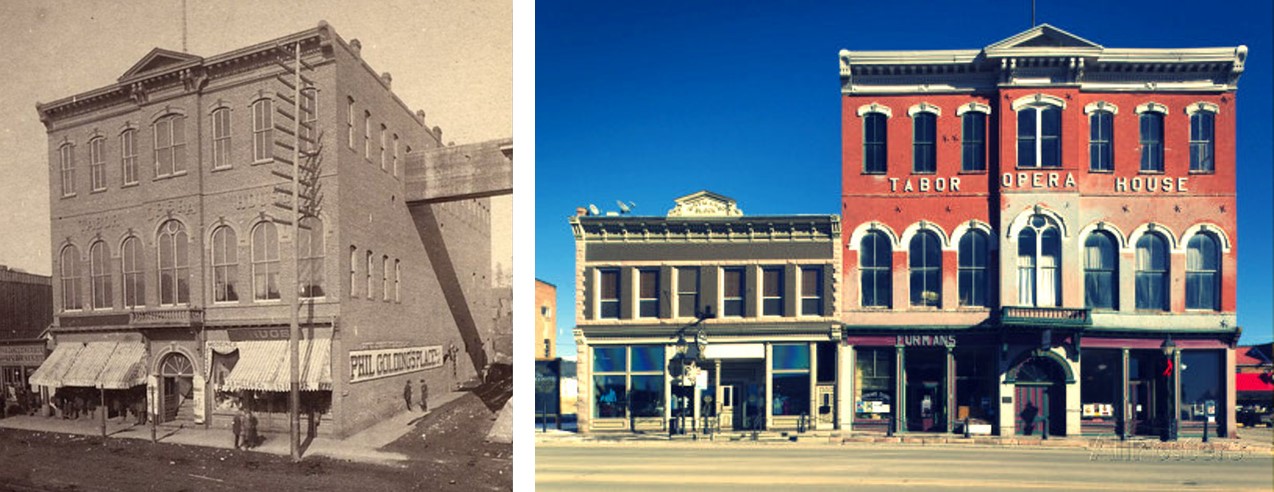Year Listed: 2016
County: Lake County
Construction Date: 1875
Threat When Listed: Demolition by Neglect
Status: In Progress
Video courtesy of CBS4
“On Harrison Avenue in Leadville stands the elegant brick Tabor Opera House, the most imposing edifice in the city and conceded by all to be the finest theater west of the Missouri River. All the appointments of this temple of amusement are first-class in every respect; the scenery artistic, and under the full flood of gas-light the coziest place for lovers of the legitimate drama to throw off the busy cares of life and yield to the fascinations of music and imagery.” 1880 report by Lewis A. Kent in Leadville the City, Mines, and Bullion Product
Financed by one of Colorado’s best-known mining entrepreneurs, Horace Austin Warner Tabor, the Tabor Opera House opened on November 20, 1879, a mere 100 days after its initial construction began. The three-story building included two retail stores on the first floor, an elegant theater on the second floor, and a third floor that connected to the adjacent Clarendon Hotel via passageway. The ornate interior boasted 72 gas jets (the first gas lights to illuminate Leadville), richly painted walls and ceiling frescoes, custom carpets, and hand-painted stage curtains. Oscar Wilde, Harry Houdini, John Philip Sousa, and Buffalo Bill were among the famous entertainers and speakers who performed at the Tabor Opera House.
Horace Tabor lost his fortune following the 1893 Silver Crash and the property changed hands. In 1901 the Order of the Elks acquired the building and remodeled it as a lodge, theater, and meeting hall. Fortunately, much of the original stage scenery, props, and basement dressing rooms used by stage celebrities of the 1880s were retained.
In 1954 the Elks built a new lodge and the future of the Tabor Opera House stood in jeopardy. The property survives today thanks to those who recognized the significance of the building and remained dedicated to retaining this iconic monument of Colorado history. Evelyn Livingston Furman purchased the building to save it from demolition in 1955. The Tabor functioned as a seasonal entertainment venue under the ownership of the Furman family which has continued through three generations. In 2018, a Tabor Opera House feasibility study was completed to analyze the feasibility and funding sources required for various re-use scenarios for the building. Ultimately the Tabor Opera House will serve as an economic catalyst for further investment in downtown Leadville, a National Historic Landmark District and a newly selected Main Street Community.
Recent funding includes a $150,000 grant awarded by the National Trust for Historic Preservation as part of a national competition in the National Main Street Program. State Historic Fund monies were also secured to begin Phase 1 of stabilization and Phase II work on the west and south facades, which are now completed.




